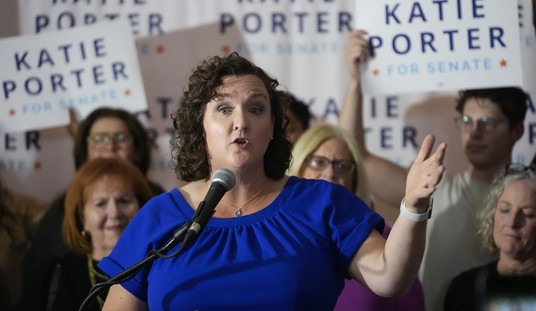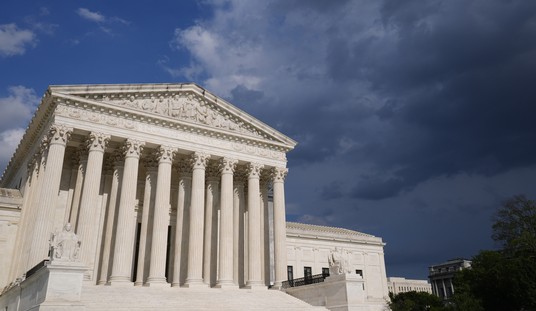Supplemental Nutrition Assistance Program beneficiaries may have been ecstatic when President Trump signed the bill ending the Schumer Shutdown (Watch: Trump Signs House-Passed, Short-Term CR, Ending the Schumer Shutdown – RedState), but the SNAP that awaits them is not the one that existed on September 30.
SNAP is the nation's primary way of providing nutrition assistance to people living at or below the poverty line. It serves approximately 42 million people in 22.4 million households. For those challenged by numbers, that means about one in eight Americans, and about one in six households, use SNAP. About 39 percent of the recipients are children, about 10 percent are disabled between 18 and 59, and another 20 percent are elderly.
The federal government spent $100.3 billion on SNAP in Fiscal Year 2024. Of that sum, about $7 billion went to the states to administer the program. SNAP benefits for FY2024 were about $6 per day per person in a household. The TikTok videos you saw during the shutdown of SNAP recipients with several thousand dollars available on their EBT card are either faked for clout or they are proof of a criminal conspiracy.
When President Trump signed the One Big Beautiful Bill Act of 2025, he not only funded the government for the remainder of the year, he made the largest cuts to SNAP in its history. It included a $186 billion reduction to SNAP spending and included new work requirements and other restrictions on who receives benefits.
Let's take a look at the changes.
- Age limit increased: Able-bodied adults aged 18-64 must work at least 80 hours per month or be engaged in education, a training program, or volunteering to remain eligible for SNAP benefits beyond three months in a three-year period. Previously, the upper age limit was 54.
- Exemptions removed: Previously, people falling in the ABAWD category, which stands for Able-Bodied Adults Without Dependents, were only allowed to enroll in SNAP for three months in three years. There were exceptions for veterans, the homeless, and kids aging out of foster care. Those exemptions have been removed.
- Caregiver exemption narrowed: The exemption to the time limit for caregivers of children under age 18 has been changed to children under 14.
- Waiver criteria narrowed: Areas with an unemployment rate over 10% (except Alaska and Hawaii) may qualify for a waiver from the work requirements. Previously, a waiver could be obtained by the state certifying that certain areas lacked sufficient jobs. That waiver was eliminated, and states were told to use Bureau of Labor Statistics data to apply for waivers.
Other changes will also hit hard.
- Federal Cost Share Reduced. In the past, the federal government picked up the tab for 75 percent of administrative costs. Under the OBBA, the federal share is 50 percent.
- End of Benefits for Most Non-Citizens. SNAP changes will cut benefits for roughly 250,000 refugees and other humanitarian visa holders.
BACKGROUND:
New Welfare Wake-Up Call: Rollins Slams Corrupt SNAP System – RedState
The administrative changes will pare the roles by perhaps 3 million recipients; as many as 2.4 million people will be dropped due to work requirements alone. But the real savings will be in fraud reduction. Currently, an obscene amount of money is siphoned off from SNAP. USDA investigators busted a ring of SNAP fraudsters
Starting in 2019, KEHOE orchestrated a network that supplied approximately 160 unauthorized EBT terminals to stores across the New York area to illegally process more than $30 million in EBT transactions. Working with his codefendants NAWAFLEH, OMAR ALRAWASHDEH, OBAID, and EMAD ALRAWASHDEH, KEHOE submitted approximately 200 fraudulent USDA applications, misappropriating USDA license numbers and, in some cases, doctoring application documents, to obtain EBT terminals for unauthorized stores—including smoke shops and other ineligible businesses.
Good morning to everyone in Massachusetts who is furious that Maura Healey keeps looking the other way as waste and fraud explode inside our state’s SNAP system.
— Chester Tam (@islantstudio) November 16, 2025
In FY24 Q4 alone, $1.9 million in SNAP fraud was uncovered. Another $4.6 million was identified over the full fiscal… pic.twitter.com/KhBB2gyPyQ
USDA Secretary Rollins is well aware of the fraud.
SNAP fraud is out of control, and the numbers we HAVE prove it.
— Secretary Brooke Rollins (@SecRollins) November 13, 2025
Data from just 29 states uncovered nearly 200,000 people with dead people’s social security numbers… Meanwhile, 21 states are suing to keep their data hidden.
Why block transparency unless the truth is worse than… pic.twitter.com/XAjHKncCfp
Data from just 29 states uncovered nearly 200,000 people with dead people’s social security numbers… Meanwhile, 21 states are suing to keep their data hidden.
This number was developed by comparing Social Security data to SNAP data. If some 200,000 deceased persons were receiving SNAP in the states that cooperated, then nationally the number of fraudulent accounts would number over 500,000.
Overall, if this program is actually implemented, we should be able to return enrollment to pre-COVID levels of about 37 million. That would be a major savings of money as well as clearing the rolls of people who should not be receiving handouts from the government.
SNAP is a program that aids millions of families. However, for it to be widely supported, it has to make an effort to reduce fraud. Americans are generous, but they aren't stupid. The OBBA changes and Secretary Rollins' on-the-ball efforts to increase accountability seem to put us on a path where we serve the needy while spending less money and sending fraudsters to jail.
RedState is your leading source for news and views on administration, politics, culture, and conservatism. If you appreciate our reporting and commentary, please consider becoming a member and supporting our efforts. Use promo code FIGHT to get 60% off your membership.












Join the conversation as a VIP Member